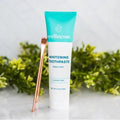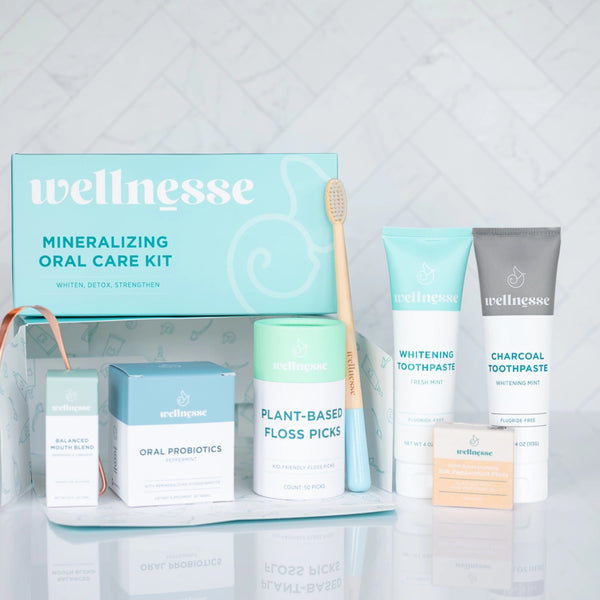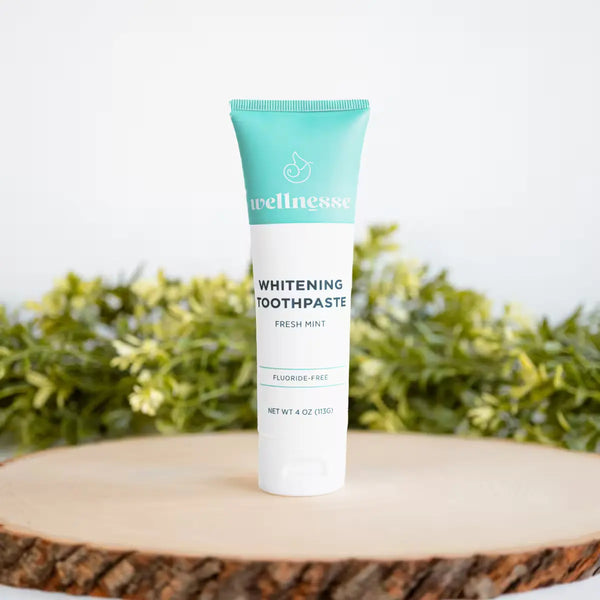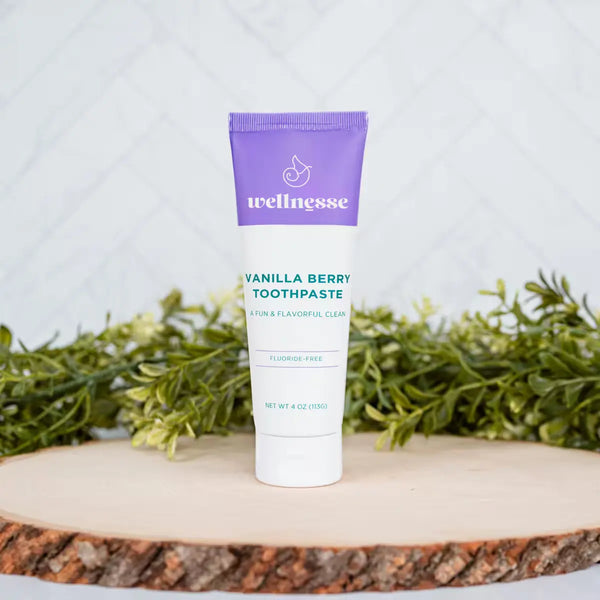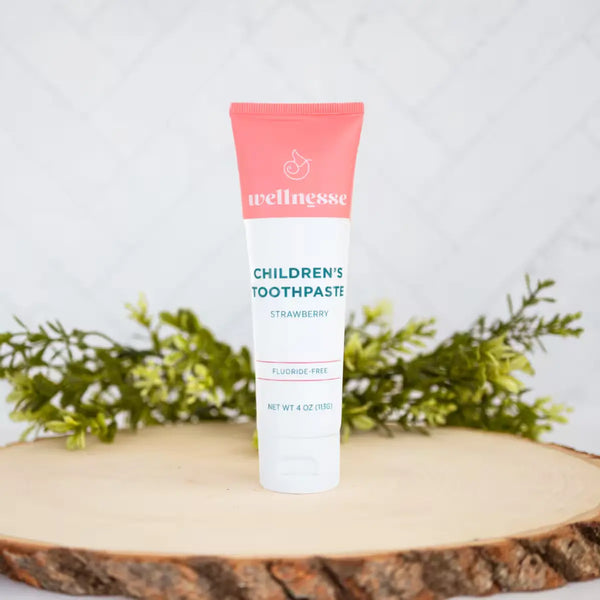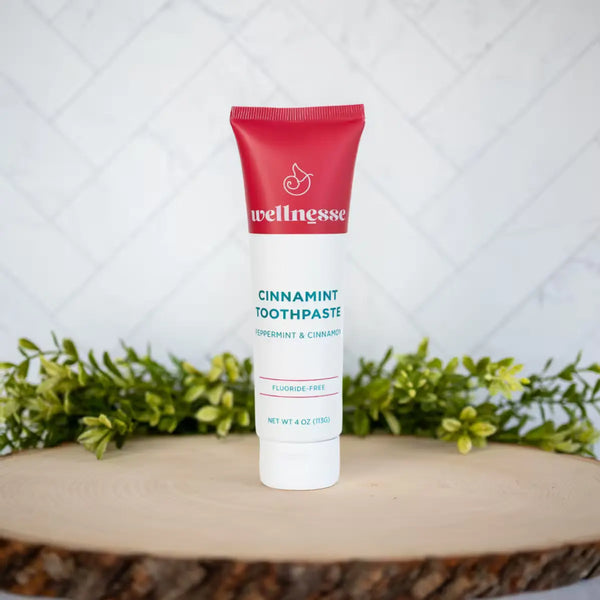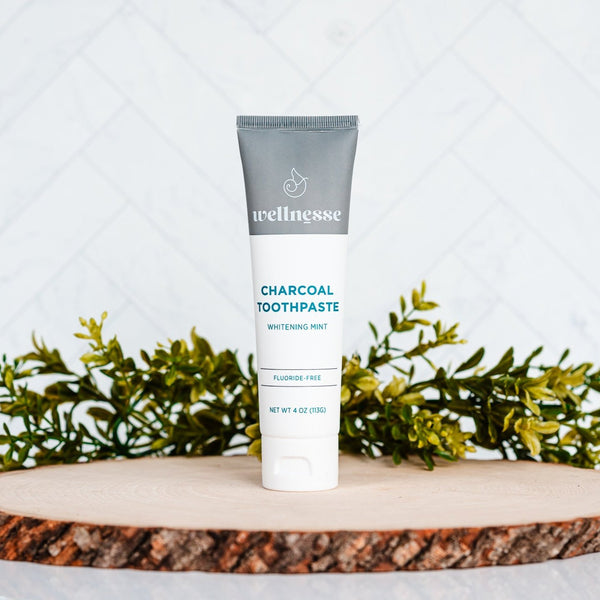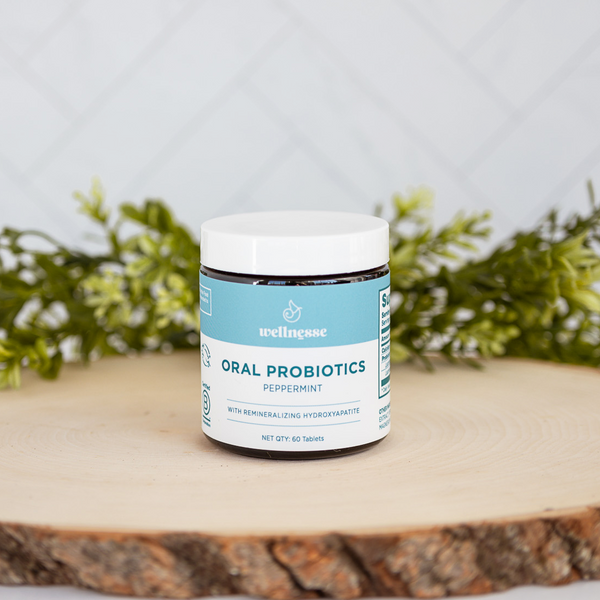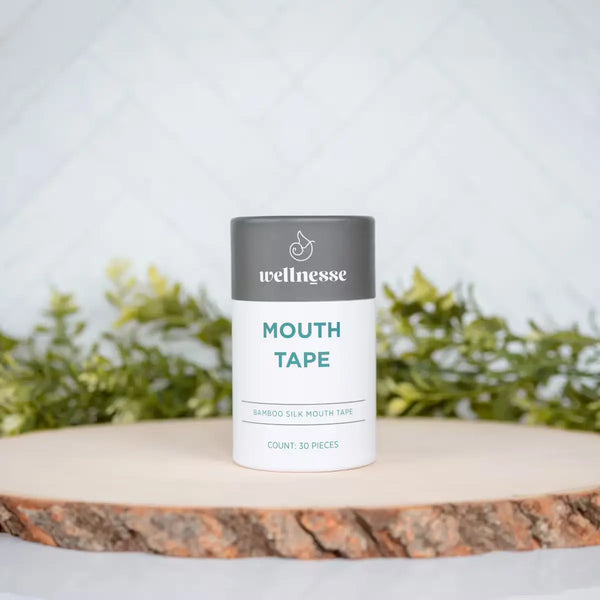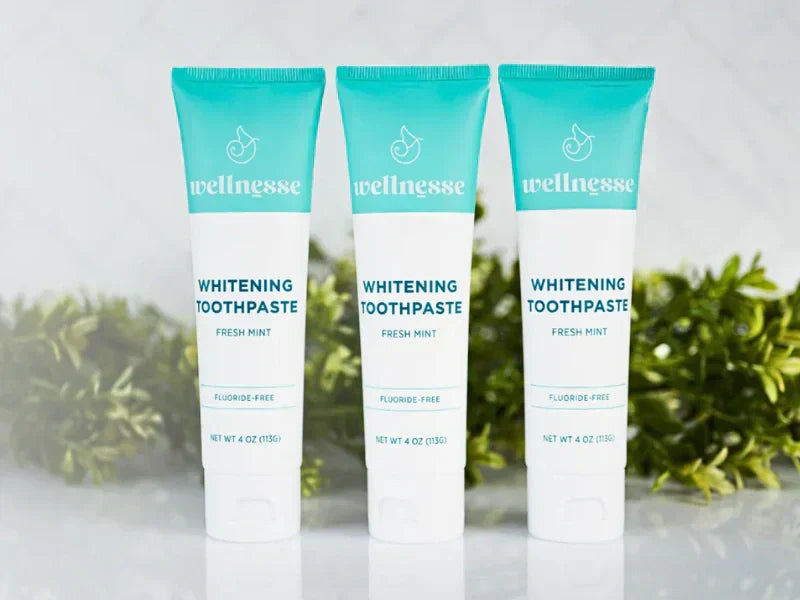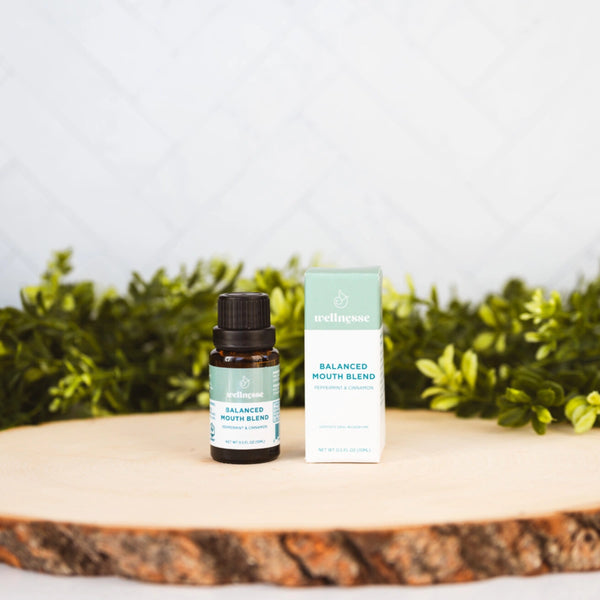Toothpaste plays a much bigger role in your health than many people realize. Brushing twice a day helps remove food and plaque, but what your toothpaste contains can affect your teeth for years to come. Some commercial brands contain harsh chemicals, artificial flavors, and abrasive materials that can cause irritation or even damage enamel over time. That’s why it’s essential to learn about the best toothpaste ingredients. Those that support strong, clean, and healthy teeth without unnecessary additives. Choosing the right formula helps protect your smile for the future.

Enamel-Strengthening Toothpaste Ingredients You Should Know
Hydroxyapatite
This is a naturally occurring mineral that forms the main component of tooth enamel and bone. When used in toothpaste, it helps fill in tiny cracks and smooth out the tooth surface, making enamel stronger and more resistant to decay. Due to its close resemblance to the structure of real teeth, it integrates well and supports long-term dental health. Using toothpaste with hydroxyapatite allows you to restore your enamel without relying on fluoride, making it an ideal choice for those seeking safe alternatives with a proven scientific basis.
Nano-Calcium Phosphate and Its Role
These microscopic particles are small enough to reach tiny damaged areas on the tooth’s surface, helping them rebuild from the inside out. This ingredient works by providing calcium and phosphate, minerals essential for enamel formation, in a form that’s easily absorbed. Its inclusion in remineralizing toothpaste ingredients promotes faster repair while reducing the chances of future wear or erosion. It’s especially beneficial for people who experience early signs of enamel loss.
Arginine Bicarbonate for pH Balance
A healthy oral environment is essential for enamel protection, and this ingredient works by neutralizing acids produced by bacteria. When the pH level remains stable, enamel stays strong and cavities are less likely to form. Arginine also encourages calcium ions to bind to tooth surfaces, which helps build resilience. For those seeking toothpaste for strong teeth, arginine bicarbonate delivers targeted support by boosting the mouth’s natural defense against acid erosion.
Best Minerals for Strong Teeth
Tooth health also depends on restoring and preserving the enamel that protects the tooth's interior. Mineral-based toothpastes offer a natural and effective way to reinforce teeth without relying on synthetic additives. Below are some of the most beneficial minerals:
-
Silica: Silica, a naturally occurring mineral often derived from quartz or sand, is a popular ingredient in natural toothpaste due to its fine texture and effective polishing properties. Hydrated silica is a gentle abrasive in dental formulations that helps remove plaque, food residue, and surface stains without wearing down the enamel layer. Unlike harsher scrubbing agents, silica particles are rounded and fine, making them safe for daily use. As it cleans, silica also creates a smooth surface on the enamel, reducing places for bacteria to adhere and making future plaque buildup less likely. For those concerned with preserving enamel integrity while achieving a whiter smile, silica provides a non-invasive alternative to bleaching agents or heavy-duty abrasives. It works especially well with calcium- or fluoride-based remineralizing agents, helping polish the enamel surface so minerals can better bond and protect.
-
Calcium Carbonate: As a mild abrasive, it helps scrub away surface stains and accumulated plaque, while also providing a vital mineral used by the body to reinforce tooth enamel. Calcium is a key component of hydroxyapatite, so using calcium carbonate in toothpaste helps replenish what daily wear may deplete. Unlike commercial whitening agents relying on peroxide or acidic compounds, calcium carbonate brightens teeth through physical polishing rather than chemical alteration. It's beneficial for those looking to boost enamel strength without resorting to synthetic additives or fluoride.
-
Clay Powders: Clay powders such as bentonite and kaolin are increasingly recognized for their unique ability to detoxify the mouth while delivering essential trace minerals like magnesium, silica, and potassium. Bentonite clays are known for their absorbent properties. While slightly less absorbent, Kaolin clay offers a smoother texture and is often used for its gentle cleansing and whitening effects. Both types of clay help neutralize acidity in the mouth, which is crucial for preventing enamel erosion and maintaining a healthy pH level. Furthermore, these clays are rich in naturally occurring minerals that can contribute to remineralization, strengthening enamel in a way that synthetic products may not replicate.
Choosing toothpaste formulated with these powerhouse minerals is an innovative and sustainable step toward comprehensive oral wellness.
Remineralizing Toothpaste Ingredients for Natural Enamel Care
The Benefits of Xylitol Toothpaste
Xylitol is a plant-derived sweetener that offers more than just a pleasant taste. When included in toothpaste, it disrupts the growth of harmful bacteria by starving them of the sugars they rely on. This helps reduce the risk of cavities while maintaining a clean and healthy mouth. Also, xylitol promotes saliva production, which plays a critical role in neutralizing acids and restoring minerals to the teeth. These benefits of xylitol toothpaste make it a valuable ingredient for those wanting to support oral hygiene while avoiding traditional chemical additives.
Fluoride-Free Alternatives in Toothpaste
Today’s fluoride-free options often include nano-hydroxyapatite, calcium-based minerals, and bioactive complexes that actively remineralize teeth. As mentioned, these components mimic the natural process of rebuilding enamel by delivering essential nutrients directly to areas of weakness. Fluoride-free alternatives in toothpaste offer a reliable way to support tooth health while aligning with a minimalist approach to oral care.
Lactoferrin and Bioactive Peptides
Toothpaste formulations now include proteins like lactoferrin and specific peptides that help maintain oral immune balance. Lactoferrin binds to harmful bacteria and reduces inflammation in the gums, while bioactive peptides contribute to healing and protection against oral infections. When looking for toothpaste for tooth repair, formulas with immune-supportive proteins are a valuable addition to any oral care routine.
Hydroxyapatite vs. Fluoride
When it comes to remineralizing toothpaste, hydroxyapatite and fluoride are the two standout ingredients, each offering unique benefits for strengthening enamel and preventing decay. Understanding their similarities and differences can help you make an informed choice about which is best for your oral care routine.
Considerations for Sensitive Teeth and Safety
When choosing a toothpaste for sensitive teeth, it’s crucial to look for formulas specifically designed to address discomfort while strengthening enamel. Unlike harsh abrasives or potent chemical agents that can aggravate sensitive teeth, hydroxyapatite works by filling microscopic cracks and exposed dentin channels in the enamel. This process not only reinforces weakened areas but also physically blocks the pathways that transmit sensations of heat, cold, or sweetness to the underlying nerves. As a result, regular use of hydroxyapatite toothpaste can significantly reduce tooth sensitivity without causing irritation or discomfort. This mineral is also well-tolerated by individuals with a history of enamel erosion or gum recession, making it a preferred choice for those prone to dental sensitivity.
Safety is another critical factor, especially for families with young children. Many remineralizing toothpastes are specifically labeled as safe for children, often highlighting fun, kid-friendly flavors like strawberry, bubblegum, or mild mint to encourage better brushing habits. Unlike fluoride, which must be carefully monitored in young children due to the risk of fluorosis if swallowed in excess, hydroxyapatite is biocompatible and non-toxic, even if accidentally ingested during brushing. This makes it an excellent option for children who are still learning proper brushing techniques and may not spit out toothpaste reliably. Parents can feel confident choosing hydroxyapatite-based formulas for the whole family, knowing there is no risk of harmful side effects from occasional swallowing.
Whitening Agents That Protect While Brightening
How to Whiten Teeth Naturally
Brightening your teeth naturally is possible with the right combination of ingredients that cleanse without causing harm. Mild polishing minerals and stain-targeting botanicals can remove dullness while preserving the tooth’s outer layer. These natural agents work gradually, which helps prevent sensitivity and avoids damage often associated with conventional whiteners. This method supports a gradual transformation that aligns with long-term oral health.

Papaya and Pineapple Enzymes
Fruits like papaya and pineapple contain enzymes that are gaining popularity in toothpaste for their ability to lift stains effectively. Papain and bromelain are the active components, known for breaking down proteins on the tooth surface that trap discoloration. These enzymes work gently, making them ideal for people avoiding chemical whiteners. Using toothpaste incorporating these tropical extracts, users can achieve a fresher look with minimal abrasion. It’s a subtle but effective route for anyone who wants to enhance their smile with organic toothpaste solutions.
Why Low-Percentage Peroxide Is Safer for Daily Use
Hydrogen peroxide is often included in whitening toothpaste, but it can lead to sensitivity or enamel erosion at high concentrations. A more thoughtful formulation uses a lower percentage to minimize these side effects while providing noticeable brightening over time. This slow-release method allows for controlled whitening that aligns better with everyday use. A toothpaste for daily use with carefully measured peroxide can offer visible results without compromising comfort or health. It’s a practical solution for anyone looking to maintain a bright smile through routine brushing.
Clean Formulations and Non-Toxic Toothpaste Essentials
Ingredients to Avoid
Understanding which ingredients to avoid in oral care is essential for those committed to clean living. Some of these substances are added for cosmetic appeal or to mimic sensory expectations. Here are the ingredients to avoid:
-
Parabens: Parabens are commonly used in cosmetic and personal care products as preservatives, intended to prevent the growth of mold and bacteria and extend shelf life. However, these compounds have been scrutinized for their potential to disrupt the endocrine system. While the concentrations used in toothpaste are typically low, the cumulative exposure from multiple daily-use products can become significant. Moreover, there are now safer, plant-based preservative systems available that don’t carry the same risks.
-
Sodium Lauryl Sulfate (SLS): While the foaming effect may feel satisfying, SLS offers no additional benefits regarding cavity prevention or gum health. It’s a known irritant, particularly for people with sensitive oral tissues or conditions like canker sores, dry mouth, or inflamed gums. SLS can strip away the protective mucous layer inside the mouth, leaving tissues more vulnerable to irritation and dehydration. For individuals with recurring mouth ulcers or heightened sensitivity, switching to an SLS-free toothpaste can lead to noticeable relief within days. Reducing reliance on this synthetic foaming agent helps support a gentler, more respectful approach to oral hygiene.
-
Artificial Colors: The bright stripes or bold shades in many toothpaste tubes may seem harmless, but artificial colorants such as FD&C Blue No. 1, Red No. 40, or Yellow No. 5 serve no dental purpose and can introduce unnecessary risks. These synthetic dyes are often petroleum-derived and have been associated with various concerns, from allergic reactions to behavioral issues in children. In some countries, specific dyes require warning labels or have been banned due to health concerns. While the visual appeal of colored toothpaste may attract younger users or stand out on store shelves, these additives do nothing to improve cleaning power or oral health. Natural toothpastes that forgo artificial coloring rely on simple, plant-based ingredients and maintain an appealing, minimalist aesthetic. Avoiding artificial dyes in toothpaste is especially important for families with young children or individuals with chemical sensitivities.
-
Synthetic Flavors: Synthetic flavors are engineered to mimic familiar tastes like mint, cinnamon, or bubblegum, often using chemical agents that are neither natural nor necessary. While these flavors can make toothpaste more palatable, they frequently mask the presence of harsher ingredients or unpleasant chemical aftertaste. In contrast to essential oils or plant-derived flavorings, synthetic options do not provide additional antimicrobial or breath-freshening benefits. They may irritate the mucosal lining in sensitive mouths or contribute to allergic responses, particularly for those sensitive to artificial additives.
Creating a healthier oral care routine begins with reading labels with intention and understanding what doesn’t belong. By opting for cleaner alternatives that focus on transparency and plant-based functionality, you're investing in your smile and overall well-being.
Toothpaste Base Components
The foundational components of toothpaste play a major role in how it feels and performs during brushing. Glycerin and sorbitol are humectants that retain moisture, preventing the paste from drying out and ensuring a smooth texture. These ingredients also contribute to the gentle glide of the product across your teeth, making the brushing process more comfortable. Meanwhile, coconut-derived surfactants serve as a mild foaming agent, helping disperse the paste evenly and lifting debris away. These ingredients provide a stable and hydrating base, supporting a natural enamel care routine without relying on harsh chemical stabilizers.
Texture and Consistency
Making a pleasant texture in toothpaste doesn't require synthetic thickeners. Natural cellulose gums, derived from plant fibers, provide a smooth and stable consistency that facilitates easy application. These ingredients bind the formula together while remaining gentle on sensitive mouths. Unlike petroleum-based thickeners or artificial gels, cellulose gums do not disrupt the mouth’s natural environment. This plant-based solution benefits individuals seeking to eliminate unnecessary additives from their brushing routine. If you’re looking for the best toothpaste for tooth repair, picking one with a non-irritating texture supports comfort.
Choosing the Best Toothpaste for Daily Use and Family Needs
Morning vs. Night Formulas
Morning brushing often focuses on freshness and stain removal, while evening brushing is the perfect time to support restoration and recovery. A morning formula might include natural polishing agents and mild whitening elements that brighten your teeth after sleep, when surface buildup is more noticeable. Nighttime blends, on the other hand, may feature calming and restorative components to help enamel recover from daily exposure to food and acids.
Toothpaste for Sensitive Teeth
Sub-micron hydroxyapatite offers a solution by filling in tiny gaps in enamel and blocking nerve pathways, helping to reduce sensitivity at the source. Because this mineral closely resembles what teeth are naturally made of, it integrates seamlessly and works without irritation. Consistent use builds a stronger surface that deflects triggers.

Navigating the world of toothpaste can feel overwhelming, but online retailers have made it easier to filter products by ingredient preferences. This level of customization is especially helpful for people with sensitivities, allergies, or strong preferences for clean beauty principles. When you’re looking to shop for healthy toothpaste, select websites that provide third-party certifications and the ability to sort by qualities like fluoride-free. That way, you’re empowered to choose formulas aligned with your lifestyle.
